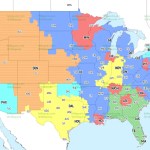US stock markets faced a notable downturn on Friday following the release of disappointing jobs data, casting a shadow over the economic outlook and feeding rising concerns among investors. The S&P 500 slipped by 0.3%, while the Dow Jones Industrial Average dropped 0.5%. The Nasdaq Composite, heavily weighted towards technology, barely held its ground, closing just below neutral.
Central to this market pullback was the August jobs report from the Bureau of Labor Statistics, which indicated that the US economy added only 22,000 jobs—far below the anticipated 75,000. The unemployment rate also ticked up to 4.3%, compared to 4.2% recorded in July. Moreover, revisions to earlier months’ data revealed that over the last three months, the economy created fewer than 30,000 new jobs, marking a significant cooling trend in the labor market.
### Understanding the Labor Market Weakness
The backdrop of this jobs report reflects a concerning narrative about the US labor market. July’s report had already been revised downwards, and the new data revealed that June actually saw a loss of 13,000 jobs, marking the first labor market contraction since the onset of the COVID-19 pandemic in 2020. This series of weak reports suggests that hiring managers are growing increasingly cautious, potentially attributable to factors such as tighter monetary policy, ongoing inflationary pressures, and external economic uncertainty, exacerbated by geopolitical tensions.
The implications for investors and policymakers are profound. The robust employment numbers that had characterized the post-pandemic recovery are giving way to a more uncertain future. Many traders are now betting on imminent interest rate cuts from the Federal Reserve in response to the slowing economy and labor market. Upcoming meetings in September might see a shift in monetary policy, with expectations increasingly leaning toward a significant cut.
### Market Reaction: Interest Rates and Treasury Yields
Following the jobs report, the bond market reflected a palpable shift in sentiment. Treasury yields fell sharply, with the 30-year yield dipping below 4.79%, while the 10-year yield dropped to its lowest close since April at 4.07%. This shift signifies growing investor confidence in an impending rate cut.
Federal Reserve Chair Jerome Powell has faced criticism for not acting sooner to alter monetary policy in light of the weakening job market. Former President Trump vocalized his dissatisfaction in a social media post, calling Powell “Too Late,” indicating a wider concern about the Fed’s responsiveness to economic signals.
### The Broader Market Context: Impact of AI and Other Sectors
While the jobs report weighed heavily on Wall Street, certain sectors showed resilience. Broadcom, for instance, benefited from strong investor sentiment surrounding its potential contracts related to artificial intelligence, leading to an approximate 9% surge in its stock. This reflects a contrasting narrative where tech companies at the forefront of AI innovation continue to attract investments, even amid broader economic uncertainties.
Tesla also made headlines with its proposed pay package for CEO Elon Musk, which could reward him with $1 trillion based on performance milestones. This bold move has seemingly energized investor interest, temporarily lifting Tesla’s stock despite the overall bearish trend in the market.
Conversely, Kenvue, the maker of Tylenol, suffered a significant slump of 12% in response to a report implying potential links between the painkiller and autism—a stark reminder of how external news can rapidly influence stock performance.
### Navigating the Future of US Economic Policy
As Wall Street anticipates upcoming inflation readings, investors are watching closely for signals on if and how the Fed will adjust its policy in light of the recent labor market data. The prevailing sentiment suggests a high likelihood of a rate cut in September, potentially a notable 50-basis-point reduction.
This prevailing uncertainty raises critical questions about the Fed’s independence and how political pressures might play into its policy decisions. Trump’s recent maneuvers to reshuffle the Fed’s leadership, including the potential dismissal of closely aligned governors, heighten concerns about the central bank’s future course of action.
### Final Thoughts
Given these developments, investors could face a volatile short-term outlook. The juxtaposition of weak jobs data and the resilience displayed by sectors such as technology presents a complex landscape. The anticipation of rate cuts may initially ease some market tensions, but the potential for longer-term economic ramifications remains ever-present.
As we move forward, it’s crucial for market watchers to remain vigilant. The ultimate decision regarding interest rate adjustments will hinge on upcoming inflation reports and the evolving dynamics within the labor market. With the landscape marked by uncertainty, the interplay between economic fundamentals and investor sentiment will continue to shape the trajectory of US stock markets in the weeks to come.
Source link










